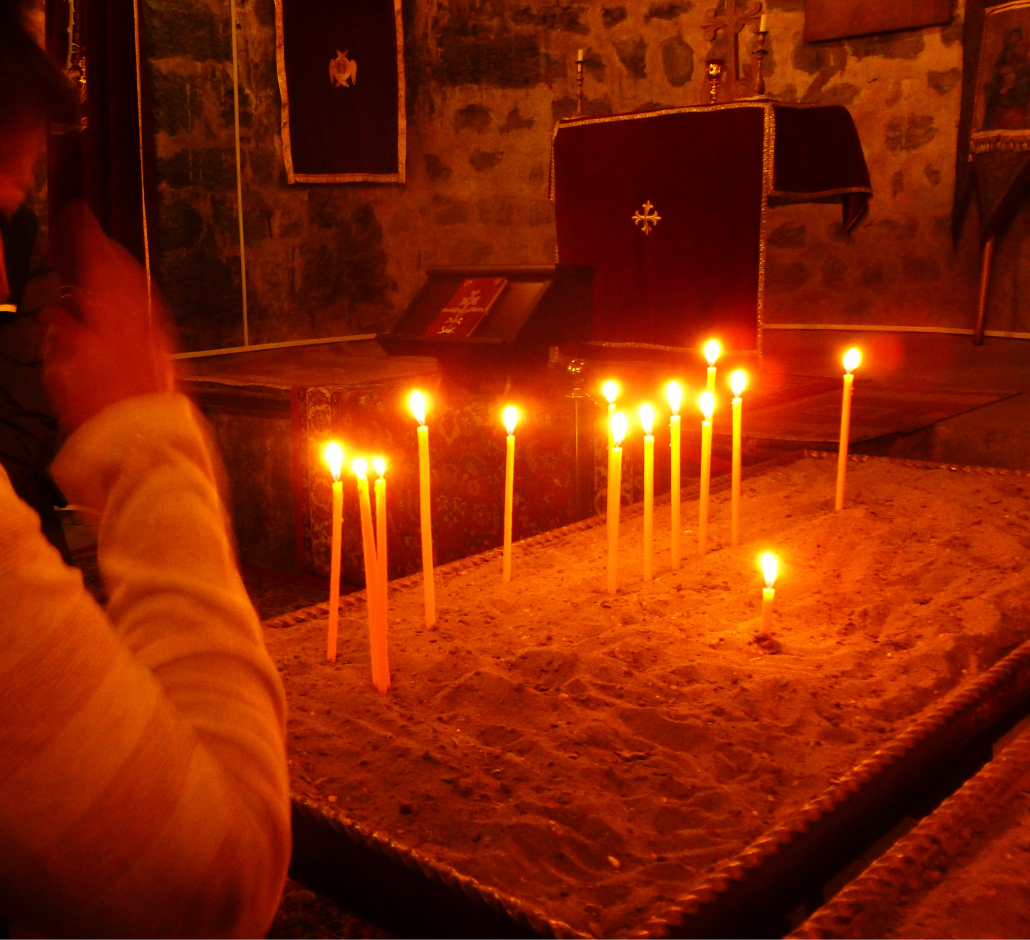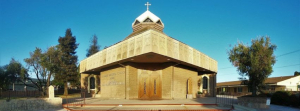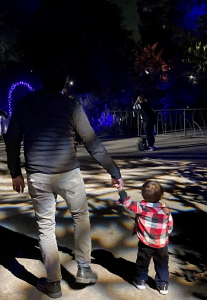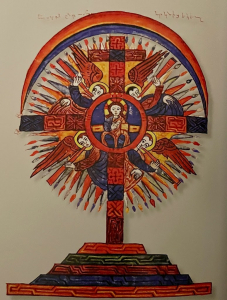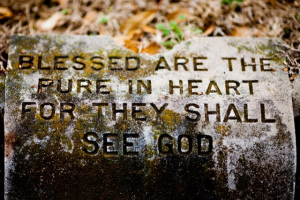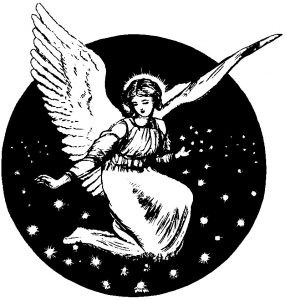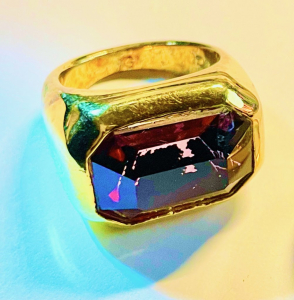by Fr. Vazken Movsesian (presented to the Western Diocese 95th Annual Assembly, 6v22)
Matthew 28… Now after the Sabbath, as the first day of the week began to dawn, Mary Magdalene and the other Mary came to see the tomb. And behold, there was a great earthquake; for an angel of the Lord descended from heaven, and came and rolled back the stone from the door, and sat on it. His countenance was like lightning, and his clothing as white as snow. And the guards shook for fear of him, and became like dead men…
Christos haryav ee Merelots
I often think, if we came face-to-face with the Risen Lord would it be enough to say Christ has risen! Wouldn’t we be in shock? In awe? Someone who we watched crucified, beaten, executed, placed in a tomb – and NOW coming back to life? Escaping unspeakable assaults on their body, basically overcoming the odds and surviving crucifixion, Jesus now standing in front of us alive? I’d say we’d be in shock, in fear, and definitely in awe!
Recently Mr. Derick Ghookasian, Diocesan Council Chairman, found a picture taken in 1927. At the bottom of the print, in Armenian handwritten script, the descriptor reads, Դաշտահանդէս Լոս Անճելոսի Հայ Առաքելական Սուրբ Խաչ Եկեղեցւոյ “Picnic of the Los Angeles Armenian Apostolic Holy Cross Church.” He had the photograph reproduced on canvas, as an art piece and Mr. Ghoogasian presented it to our Primate, Archbishop Hovnan Derderian, to be a permanent addition to the historical archives, celebrating the growth of the Western Diocese.
I first encountered this picture in Archbishop Hovnan’s office. The picture is overwhelming in its size and inviting in its historical significance and its silent message. As I looked closely at the faces and stance of the people in the photograph, emotions stirred in me. In the snap of a camera shutter, a message was sent through 95 years of time, to us, the children and the decedents of the founders of the Armenian Church’s Western Diocese. 1927 was the year that our Diocese was established and this small glimpse of the past reveals the faces of the generation that laid the foundation for what we enjoy today, as the largest and most active diocese outside of Yerevan. Of course, it didn’t escape me that the date of the picture is the 4th of July, 1927 and here is where the story of the picnic unfolds.
On that Monday afternoon in 1927, this group of immigrants assembled under the banner of their church, with their parish priest, Fr. Adom Melikian (seated in the center), celebrated Independence Day in their newly adopted country, the United States of America. Fr. Adom was ordained here in Los Angeles in 1917 – 10 years before this picture was taken and before there was a church in the area. He was ordained at a Methodist Episcopal Church by the venerable Bishop Papken Gulleserian, who later became a catholicos of our Church.
I looked at the faces in this picture, one-by-one, wondering if I’d spot an ancestor of someone I knew, but the bigger surprise for me is what I didn’t find.
Hope and resilience are the two messages that come to us through the corridors of time, because where there is hope there is no fear. That is what is missing from this picture. That fear, that helplessness, the tragic feeling of defeat is what is missing from this picture. Here, we find a group of people displaced from their historic homeland, having found refuge on the other side of planet – in the city of the Angels, Los Angeles – exactly 12 time zones from where they began. They had survived the evilest and most heinous crimes in modern history, the Armenian Genocide, which had officially ended in 1923. Not even a half-a-decade later they had gathered at a park with their parish priest, in what William Saroyan would later write, “Go ahead, destroy Armenia. See if you can do it. Send them into the desert without bread or water. Burn their homes and churches. Then see if they will not laugh, sing and pray again.”
1927 – this group assembled in a gesture of joy for life. They weren’t supposed to be here. They weren’t supposed to be alive. But there they are, sharing the joy of life.
We have been warned not to judge a book by its cover, but I can’t help doing exactly that.
Outward appearances speak volumes about this generation. Here is a glance through a time-machine of sorts. We’re looking at the generation of the Genocide – the survivors. These are the survivors – they watched their parents tortured, executed, and die, or their parents were sent off, marched through the deserts, and these people considered themselves “lucky” enough to have marched with their parents, through starvation, malaria, dysentery and somehow found a means of escaping unspeakable assaults on their body, basically overcoming the odds and surviving crucifixion.
And now look – look at what you don’t see. You don’t find long faces, nor gloomy expressions of hopelessness. Their wounds were certainly still open, not even scabbed, yet there is not a hint of discomfort in their expressions. Each face in the picture is a portrait of dignity, of strength and of faith! There are no tattered clothes nor any connection to the physical atrocities they endured only a few years back.
The picture begs the question, would these survivors of Genocide recognize, or at the very least understand, their grand children and great-grand children who now assemble on city streets, for their annual April 24th protest, with flags draped around their bodies and cars? Would they understand the elaborate luxury of the second homes, designer jewelry, or foreign cars with home-size mortgages? Would they understand their grandkids and great grandkids caught up in materialist pursuits while proclaiming inequality and injustice? We look at the picture today and recognize our ancestors; the big question is, would they recognize us?
This was the generation that survived the Genocide. This was the generation I refer to as “The God generation.” If we believe that God took nothing and created something, this was the generation that had their homes, families and lives destroyed. They had nothing and they created something, namely, the life that we live as Armenians in America. This was the generation that saw evil face-to-face and didn’t give up. They created where there was nothing, they hoped where there was none and they had faith, even when there was no reason to have faith.
In 1927, it was this generation that laid the cornerstone of the Western Diocese. Armenians were finding refuge in America. They were basking in the comforts and reality that they were, for the first time in nearly a millennium, far and protected from barbarism and massacres. After all, they understood they had landed in Los Angeles, the city of the Angels, and they were thankful that angels were watching over them. Realizing that everything was gone, they wanted to set up their new home, and they constructed the Armenian Church as the centerpiece of that home. It was in this church that they connected with “khorhourt khorin” – the Mystery that was the great and had guided them to these shores. It was in this church that they began stitching the tattered pieces of their lives back together. They played together, discussed, strategized together, learned English language, cooked their food, worked, sewed, and traded responsibilities of child rearing with one another. The Church was not their second home, it was their primary, and therefore priority home because herein they would not despair. The Church had preached and lived the message of Jesus Christ, and in 1927 the Church was, in fact, the RESURRECTED LORD! These people, with their lives and their children were Christos Haryav ee Merelots! They weren’t supposed to be there, but they were and they were celebrating.
The beautiful quote attributed to William Saroyan, by now, is known not to be a verbatim expression of the author, but the sentiment expressed is never in question: resilience in the mystical faith of the Armenian people that ensures their continuity despite the hardships. I love the flow of those unbridled words coming from Saroyan, they capture the truth of our people. But, with all due respect to the Pulitzer Prize winning novelist, I note an omission in his words that is discovered in this picnic photo. Saroyan challenges the world to try to destroy Armenia only to find them redefining themselves as a new Armenia. In his excitement to express this phenomenon, he has omitted the place where Armenians will meet to “laugh, sing and pray again.” After the 1915 Genocide, with the nation in ruins, the church was the only place where we could live the RESURRECTED REALITY, where the Vanetsi could meet up with the Kharbertsi, where the M’shetsi could find the Sassountsi, or the Tomarzatsi could sit with the Palutsi to rediscover and redesign themselves.
America was moving out West, and Armenians aimed at the horizon reached for the sunset. The Californian Diocese was established that year with five active parishes, four in the fertile California Central Valley and one in Southern California. In order of their consecration: Holy Trinity, Fresno (1900), St. Gregory the Illuminator, Fowler (1910), St. Mary, Yettem (1911), Holy Cross, Los Angeles (1923) and Sts. Sahag-Mesrob, Reedley (1924). It was fitting that the Los Angeles parish chose to consecrate their church in the name of Holy Cross – it was the symbol of their suffering and now their victory. It was located in downtown Los Angeles and served the needs of the community for a few decades until the ugly head of politics raised itself, causing two parishes, namely Holy Trinity and Holy Cross, to split from Diocesan, and therefore Holy Etchmiadzin’s, jurisdiction. St. James, Los Angeles became the successor of Holy Cross.
The generation from 1927, this “God generation” – the ones who built up life from nothingness, are calling us to find the place where we all come together. The Armenian Church is old and new, it is tough and resilient, it is strong yet tender to care for its children.
Today, as we assemble, at this beautiful edifice – the St. Leon Ghevontyants Cathedral, and the Diocesan Complex, coming from all the different parishes, representing the thousands that find expression of Christian faith, as we think of all of our accomplishment, let us truly be in shock and in awe – that we were not supposed to be here, but we are! Let us be thankful for the Leadership of the Primate and embrace his invitation to be “rooted in the past, grounded in the present and committed to the future.”
The 4th of July Picnic of 1927 is an invitation for all of us to gaze into those faces that are looking back at us through time. There we will see no blank expressions, rather each and every one of them express hope and faith, while demonstrating dignity, strength, and victory against the odds. In other words, the faces are that of the Church – the one established by Jesus Christ – as the place where the miracle of God is an everyday reality, the only place where the reality of Resurrection can legitimately be proclaimed.
